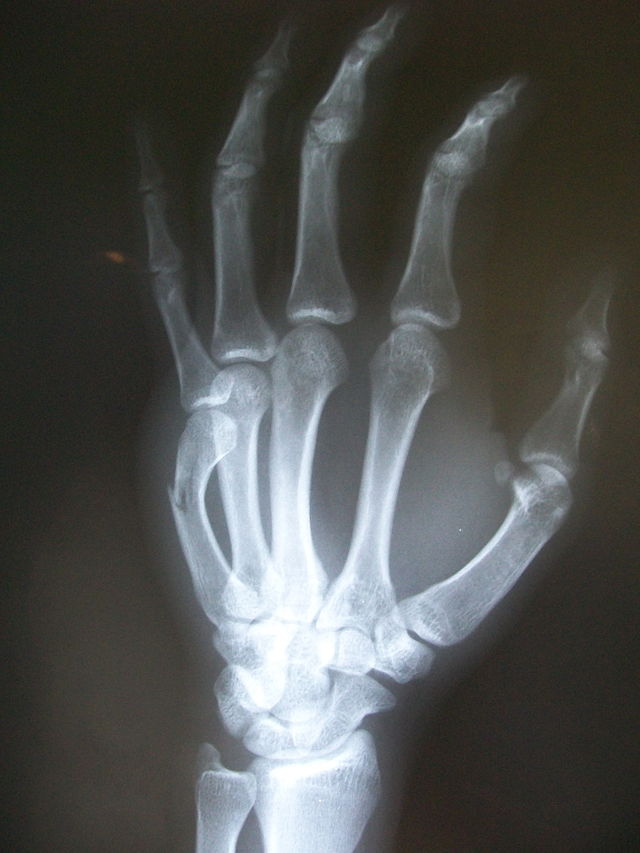A Pitt alum combined his entrepreneurial education with his father’s medical research to create a new advancement in the world of medical technology.
Jason Winder, founder and CEO of Sonogen Medical Inc., is in the final stages of developing an improved ultrasound device for healing bone fractures. The technology will use sound waves to stimulate stem cell growth in areas of a fracture, which will assist patients in the healing process.
Winder said the declining health of Americans has negatively impacted their bodies’ ability to naturally heal bone fractures, citing obesity, advanced age and osteoporosis as sources of bad bone health.
“8 to 10 percent of people who suffer a fracture just don’t heal from the fracture on their own,” Winder said.
There are currently several forms of technology that improve fracture healing for these types of patients, including surgeries, stronger plates, morphogenic proteins or electromagnetic techniques, but Winder said ultrasound is the most effective and convenient.
“[Our device] works 88 to 90% of the time,” Winder said. “It’s a very effective technology.”
Research on ultrasound healing technology has been around for nearly thirty years, and Sonogen’s device will continue to improve its healing processes.
“My father actually helped commercialize the world’s first ultrasound based bone growth stimulator — it got FDA approval in 1994,” said Winder. “It’s being used currently to help upwards of 100,000 patients a year heal from these kinds of fractures.”
It was around the time that Alan Winder was developing this stimulator that Robert Muratore, Chief Science Officer of Sonogen Medical Inc., became involved with the project.
“I knew Jason’s father, Alan, through my work at conferences and so forth,” Muratore said. “We would get together at conferences and discuss different things, and it was [Alan] who conceived of the idea of ‘let’s apply this low-energy ultrasound to bone healing.’”
Muratore and [Alan] Winder have been developing the improved ultrasound device since the early 2010s and finished building the first prototype in 2018. Winder then founded Sonogen in 2020 to raise money for FDA approval and put the device on the market.
“We’re currently raising $1.2 million, of which we have about $500,000 committed so far,” Winder said. “We expect to have the rest of the money committed by the end of this month.”
Winder said although Sonogen is a science company involved in research and technology development, at the moment he is mostly concerned with raising money. Winder attributes his success with running the company and finding funding for their research to Pitt’s Katz graduate school of business.
“[Pitt] really taught me to think like a businessperson,” said Winder. “There was a lot of great stuff that I took away from Katz that I wouldn’t be nearly as far along if I didn’t have that background.”
Muratore has been heavily involved in the research that resulted in the development of the ultrasound device. After first working with high doses of ultrasound technology in cancer and heart disease treatment, he became interested in the ways that it could heal other parts of the body.
“It seemed to be that [ultrasound] was influencing the growth of blood vessels and also the growth of bone cells in the healing bone, and it was doing that mechanically, by stimulating the stem cells that were in that damaged region,” said Muratore.
The device that Sonogen is developing utilizes what Winder refers to as “shear waves,” a type of acoustic where the motion of the wave is perpendicular to the direction in which it’s traveling.
“We deliver an acoustic signal that is very high in shear wave content, and that really appears to be the thing that makes the difference,” Winder said.
The device also hits the fracture with shear waves at a 30-degree angle, which Muratore said helps deliver more effective healing results compared to their competitors.
Sonogen Medical Inc. has also been working with an organization based in Wilmington, Delaware called the Innovation Space, which helps startup companies in science and technology connect with investors and navigate the tech markets.
Bill Provine, founder and president of the Innovation Space, said his goal for the platform was “helping early stage companies crystallize their business vision, get them connected with early investors, and help them market themselves better,” including startups like Sonogen.
“We’re excited about where they’re going,” Provine said.“They’re raising money in a difficult cycle right now. It’s not the warmest climate in terms of new money out there, but there’s opportunity, and they’re making those connections now.”
Sonogen will have to enter the device into clinical research before they can formally submit it to the FDA. They are expecting to start the process this fall, which will likely take a few months. In all, Winder said he hopes that they will have FDA approval within the next year.
“They’ve got the winning proposition,” Provine said. “[But] they’ve got to work at night. The life of an entrepreneur is not easy.”
While Provine acknowledged there is no way to predict how the device will fare once it enters the market, Winder said that the goal of Sonogen’s research is patient use.
“We do a whole bunch of things to try to get people to use the device so that they’ll ultimately benefit from it,” Winder said.



